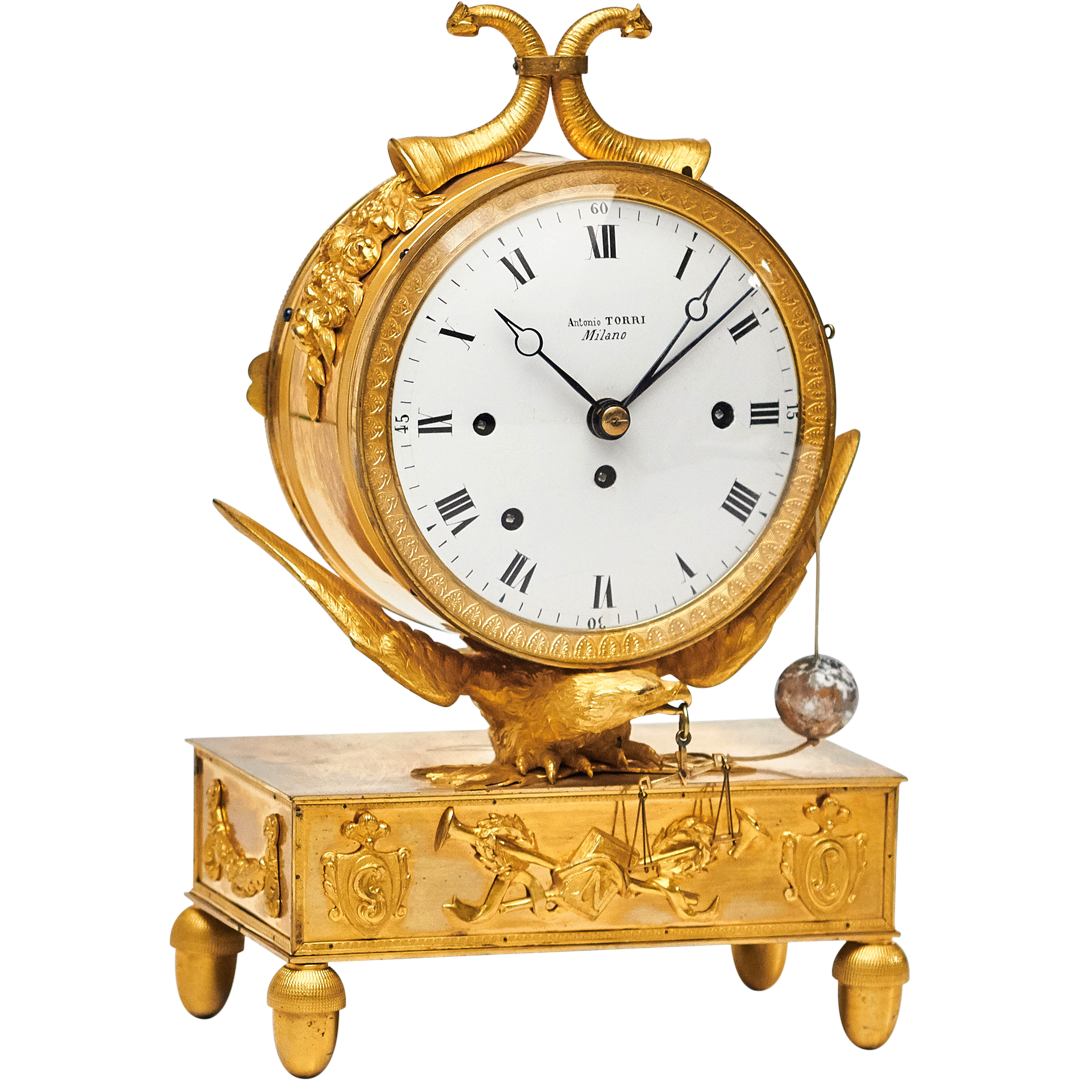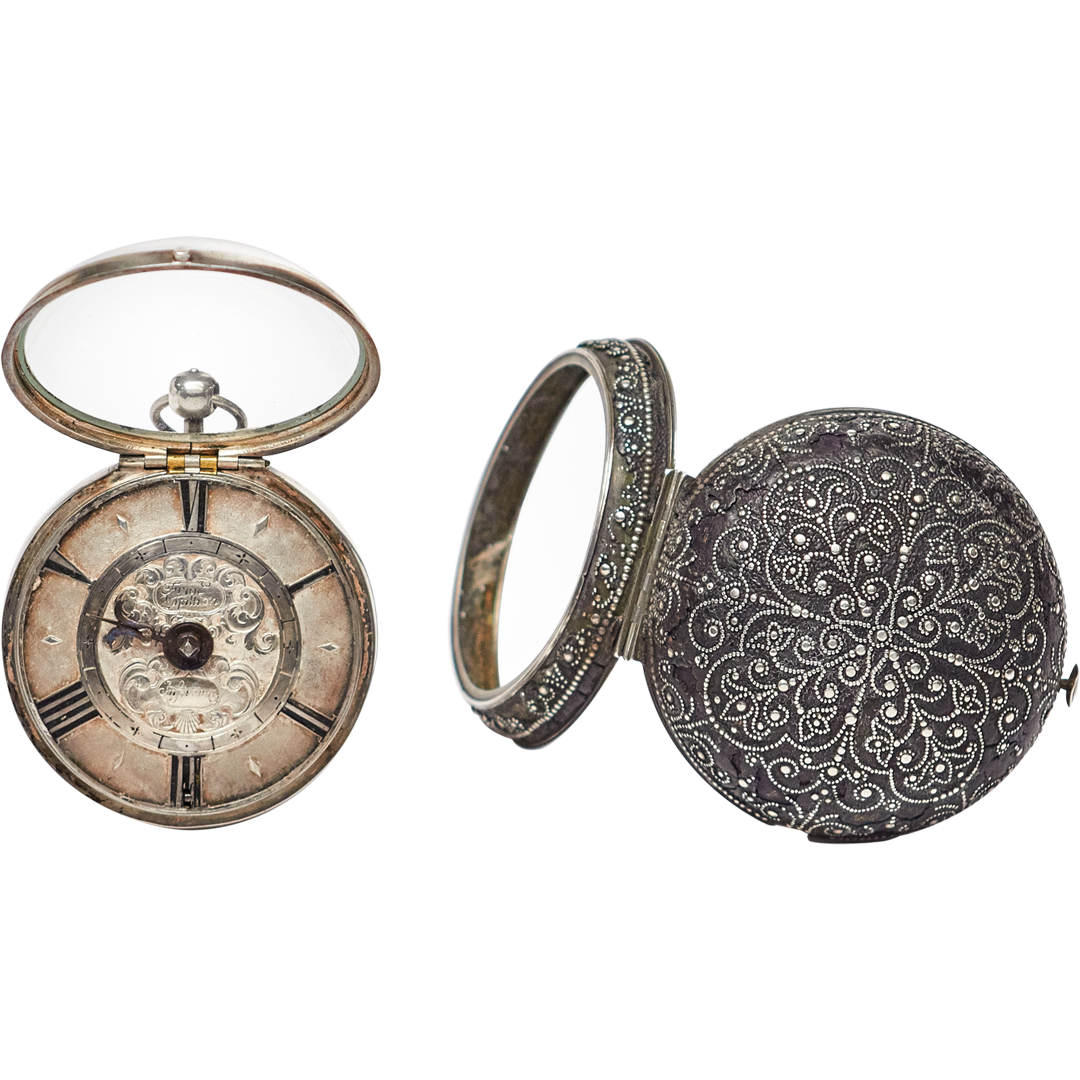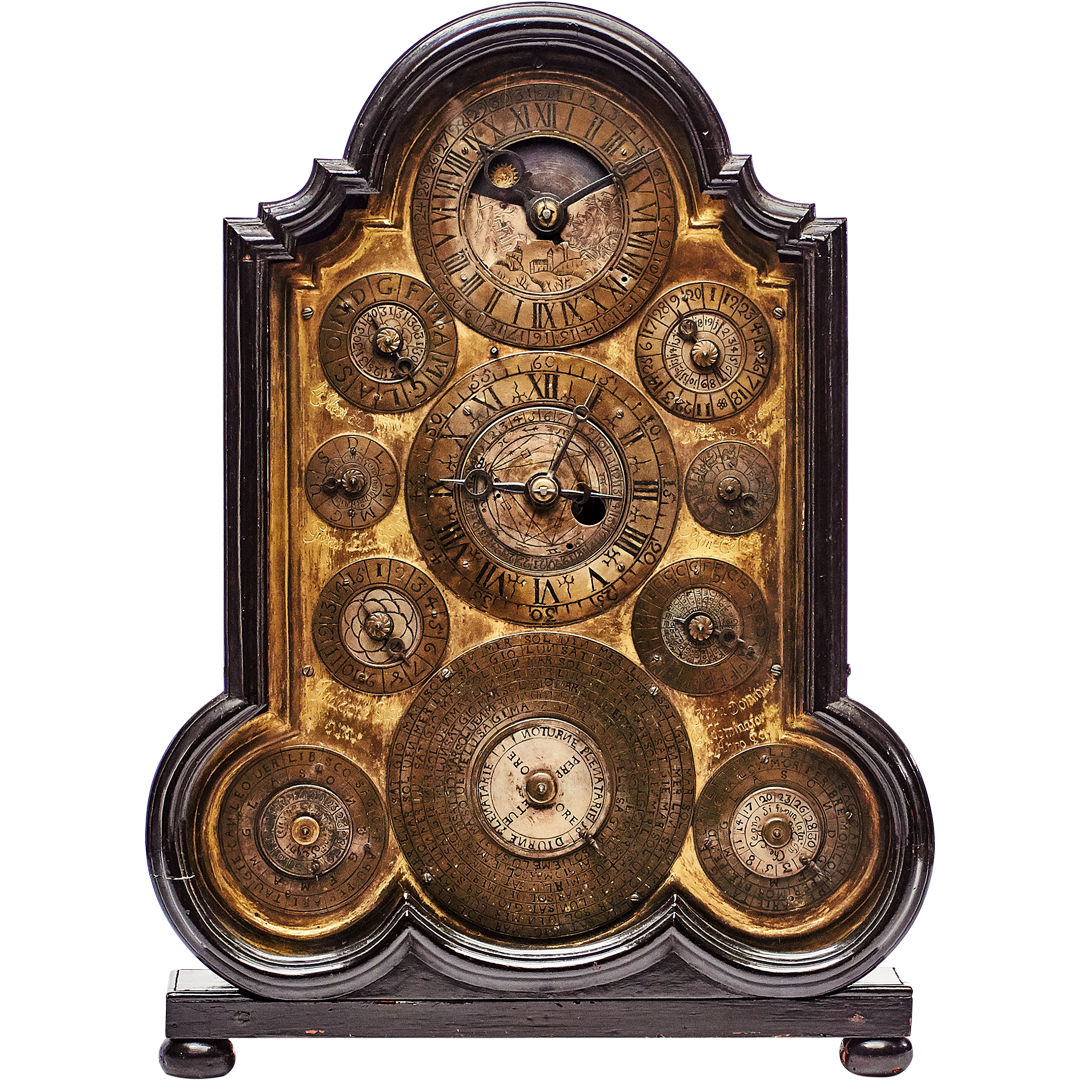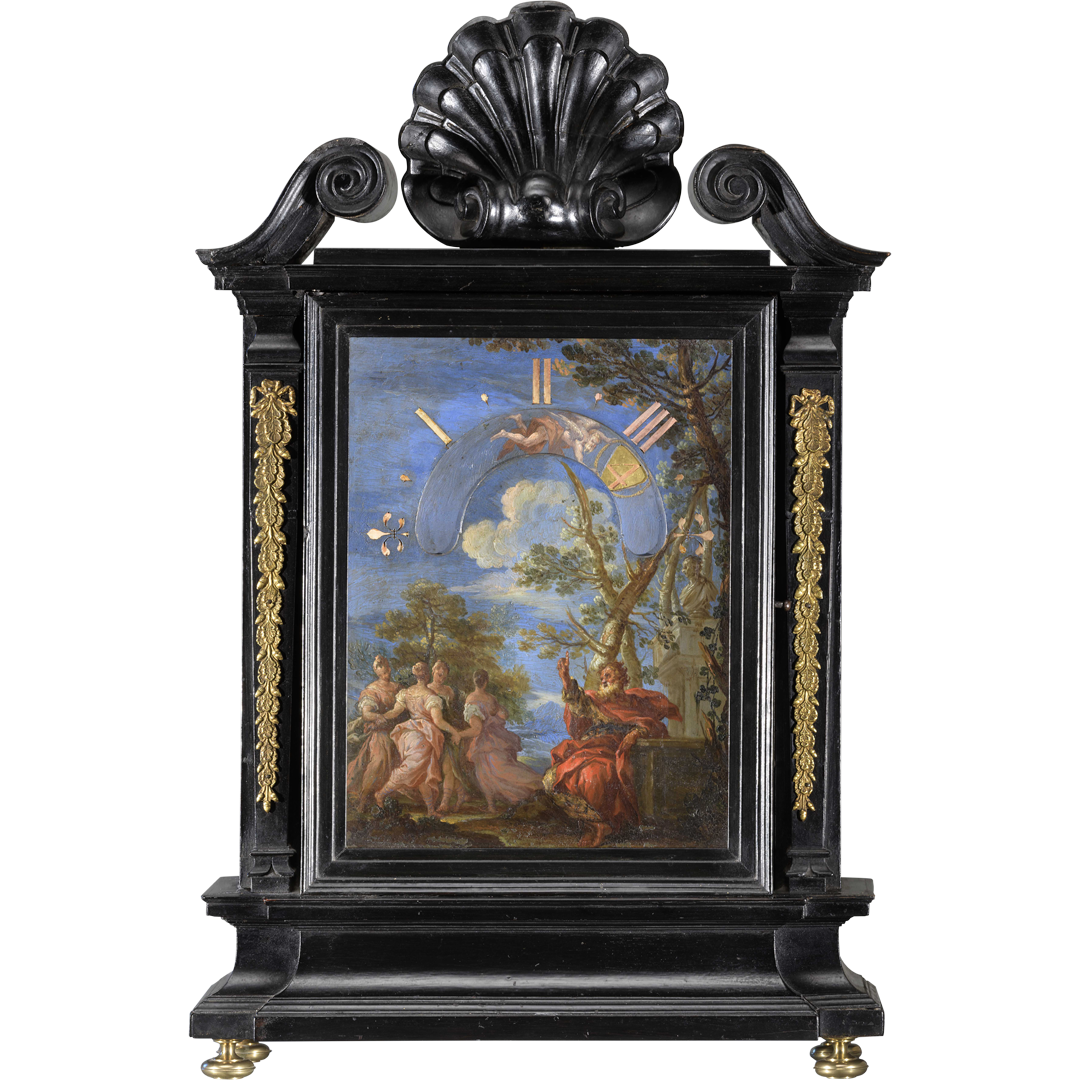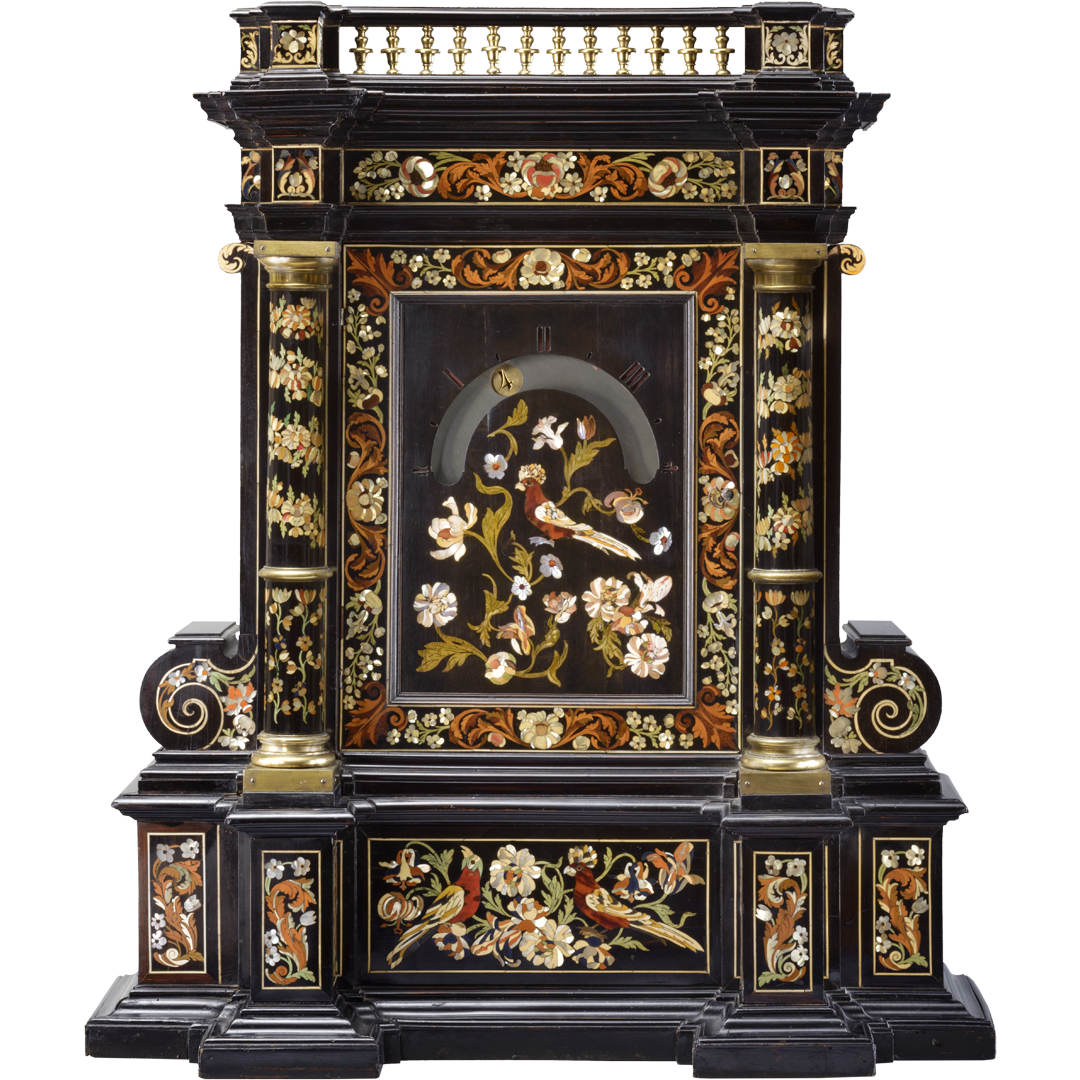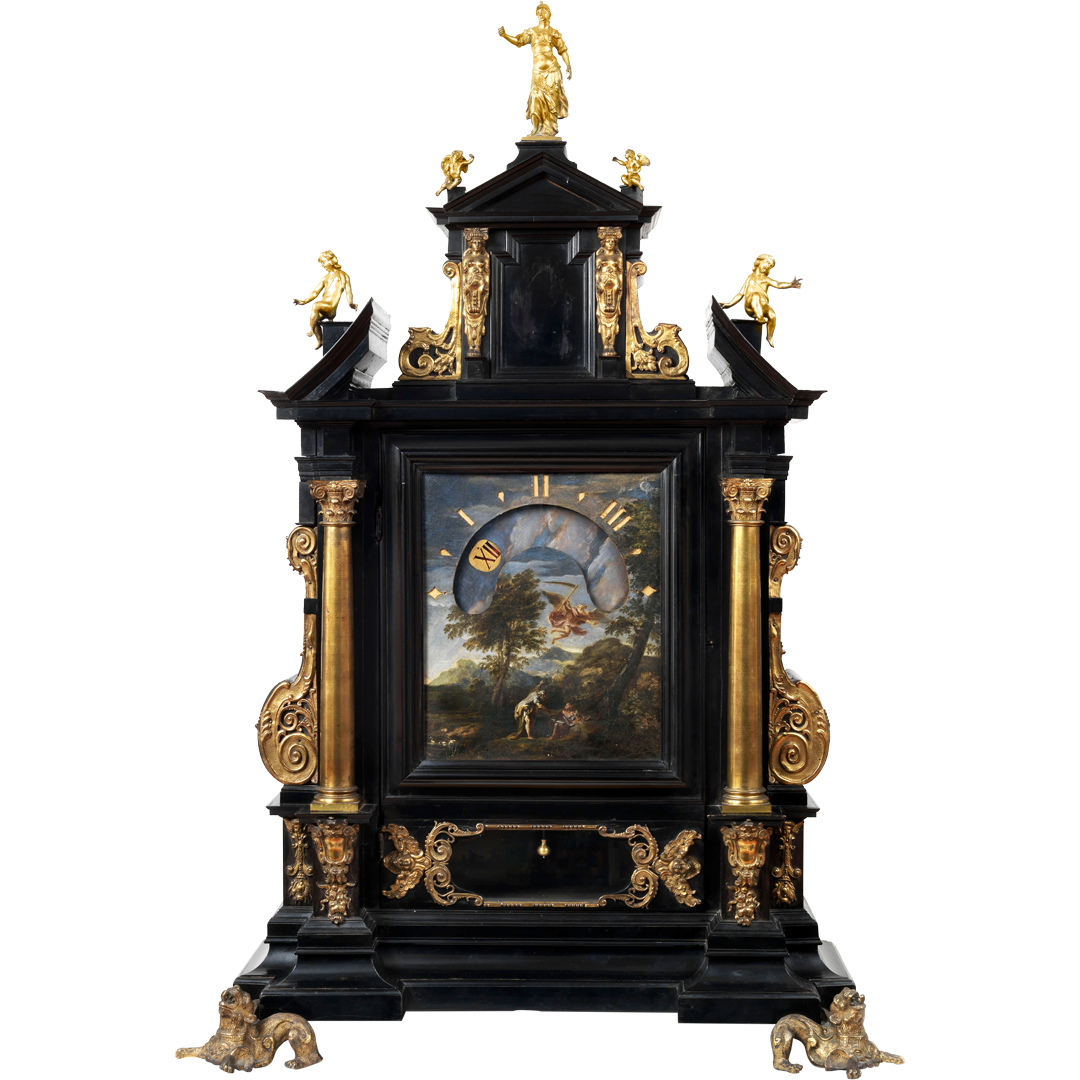July 14 - October 15, 2023
Museo Galileo
Entrance fees to the Museum include the access to the Exhibition
Italian Hours
Historical Clocks from the Del Vecchio Collection
Collectors always played a critical role in creating museum collections. The exhibition Italian Hours—curated by Antonio Lenner and Giorgio Strano—emphasizes this often undervalued fact by showing a choice of Italian clocks which were found, kept, and studied by Gian Carlo Del Vecchio (1918-2016). In sixty years’ unceasing work, this great collector created a specialized gathering that is in no way inferior to those of major museums in the world.
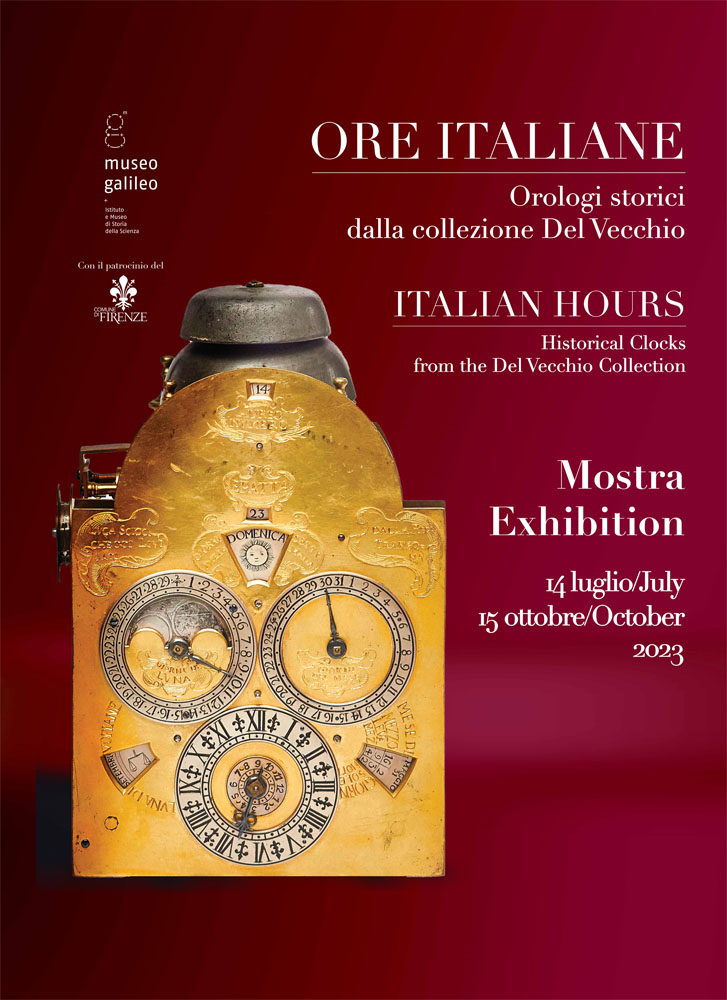

The sixty masterpieces on display, datable from the fifteenth to the beginning of the nineteenth century, are a very significant nucleus of the whole collection, which comprises more than three hundred clocks. In order to make the evolution of time-measuring systems in Italy better understandable, the exhibition also includes some instruments for measuring time which were conceived before the spreading of mechanical clocks. A choice of tools used by master clockmakers to create their artworks are also on show.

CAPOLAVORI DA COLLEZIONE
The historical clocks on display—table, wall, and tower clocks—are not only beautiful and illustrative of the work of some of most renowned Italian clockmakers. On the one hand, they bear witness to the human obsession for measuring and controlling time, in the vain attempt to dominate it, as sometimes portrayed on clock cases and dials. On the other hand, some of the clocks on display tell stories of their own, which are satellite to the general history of technological progress. The night clocks made by the Campani brothers are a good example of these particular stories. They were conceived in baroque Rome to fulfill the Pope’s desire of knowing what time it was without lighting a candle and, above all, without the maddening ticking that disturb sleeping.



 EN
EN  IT
IT 